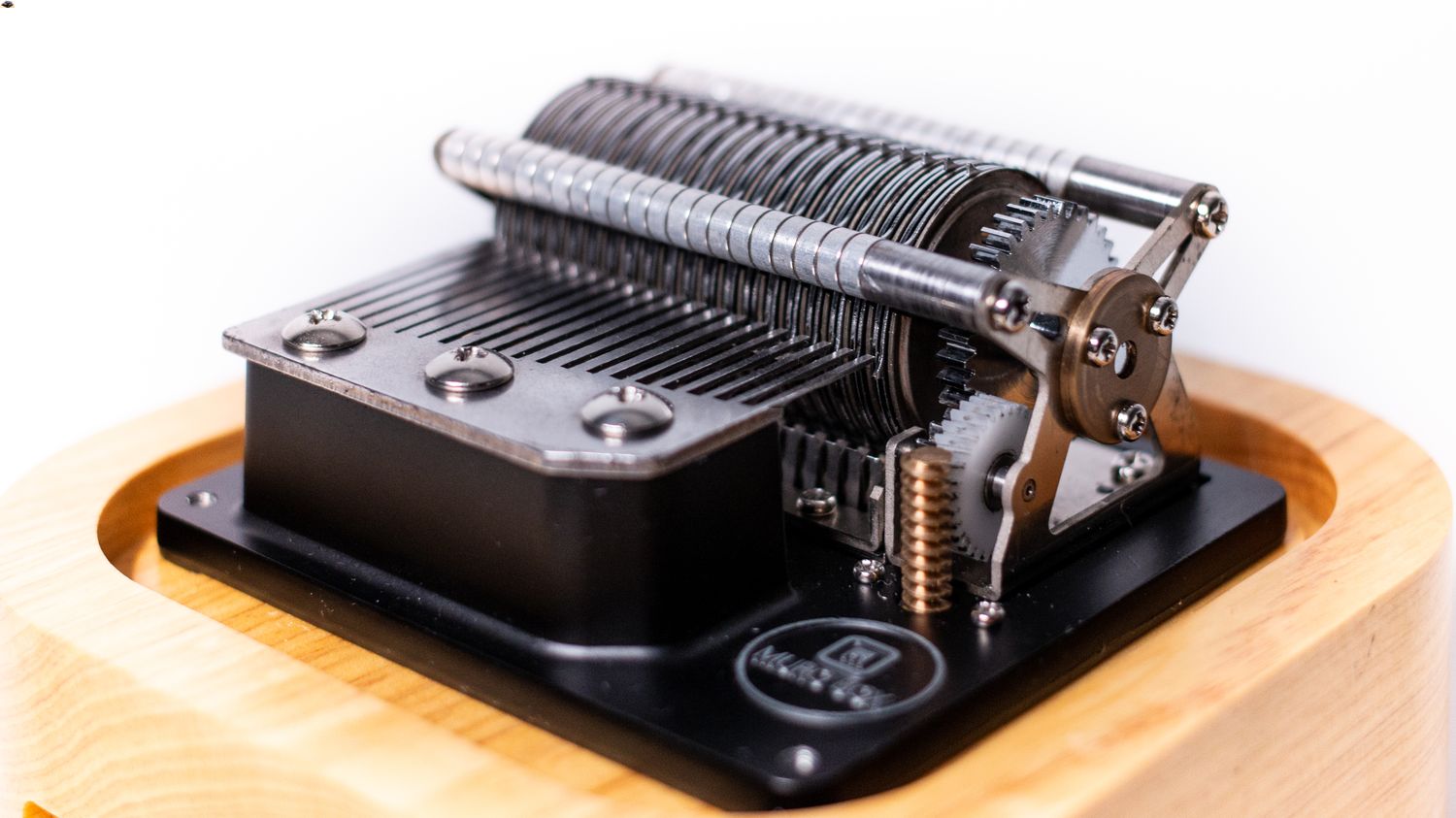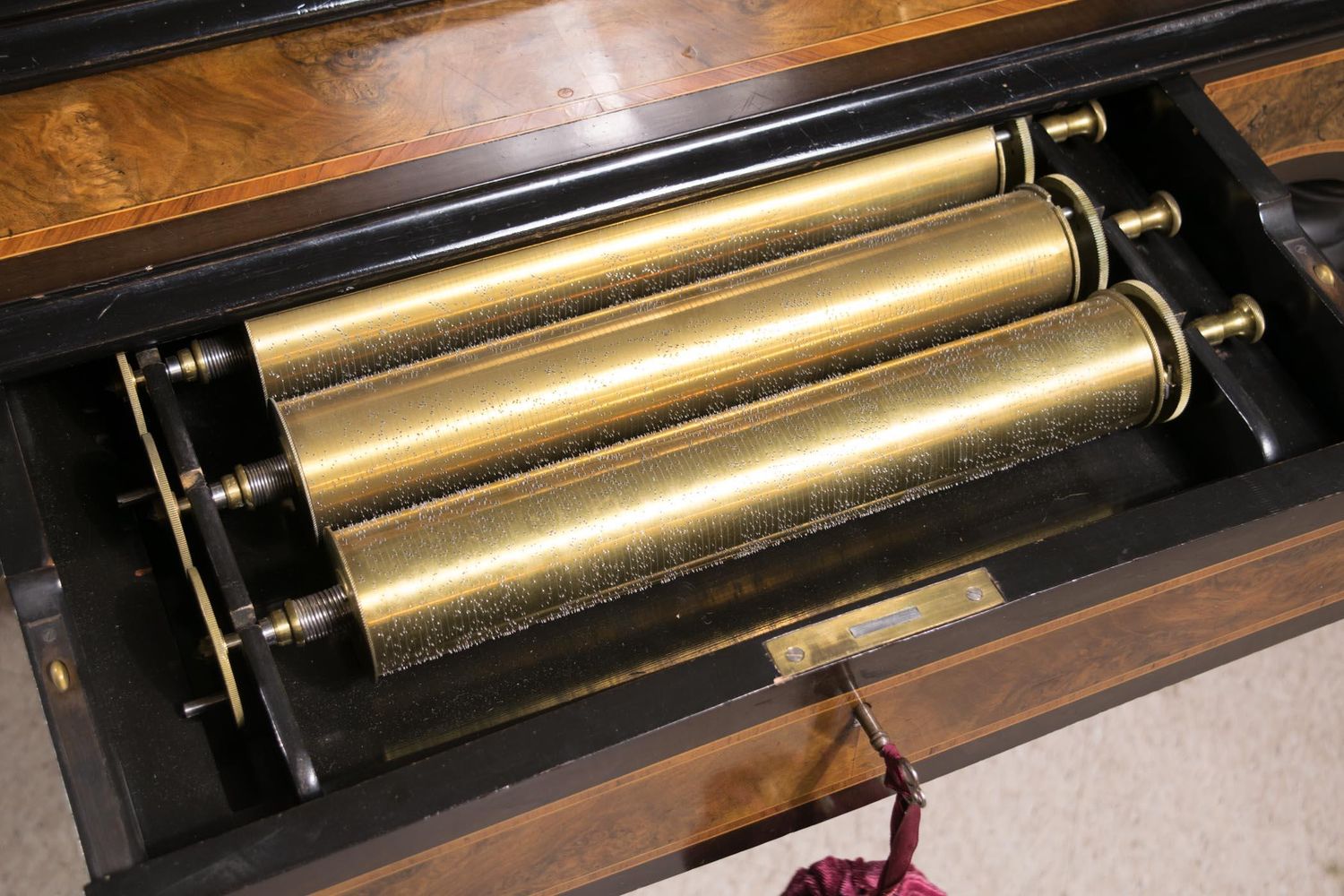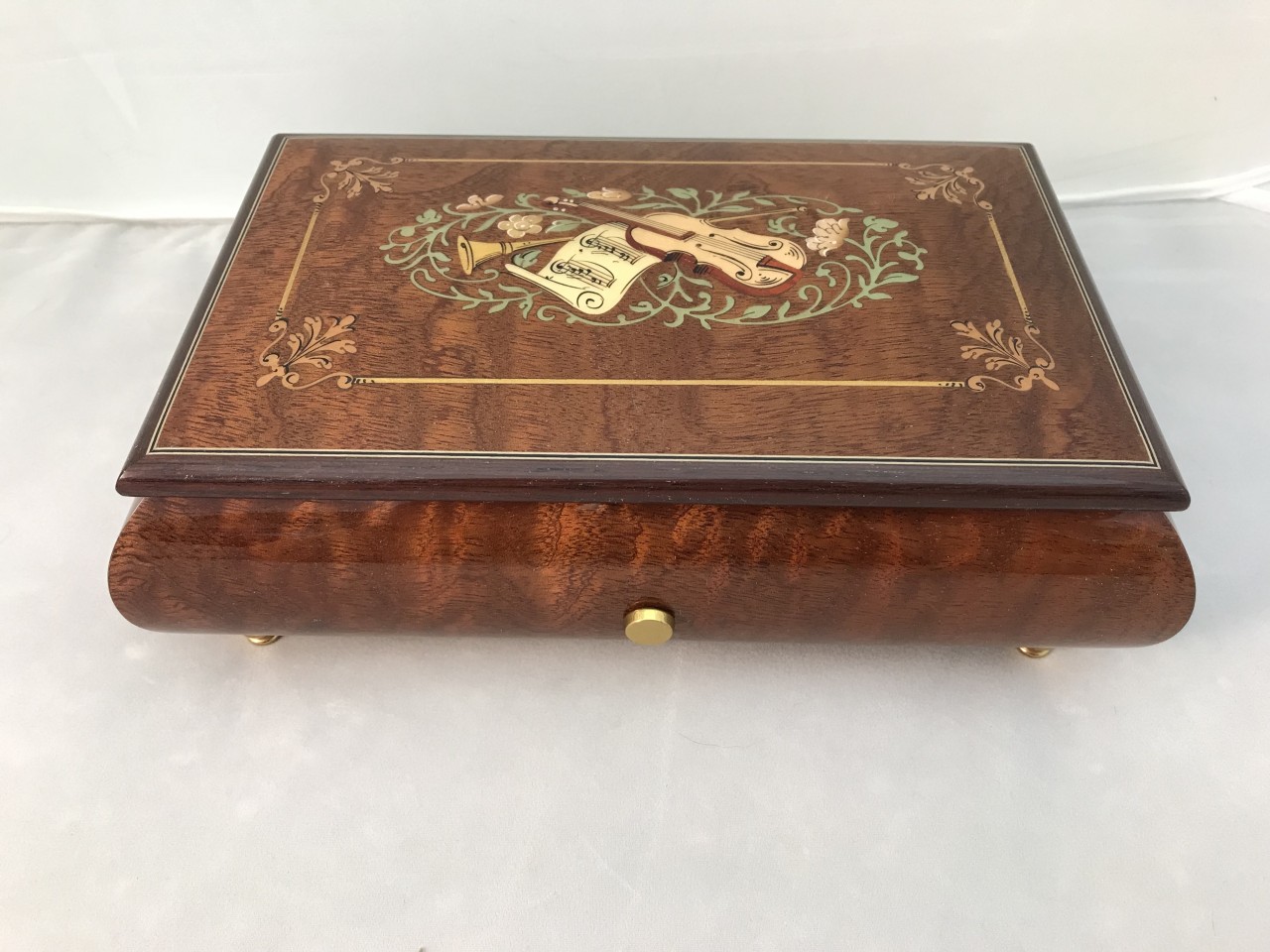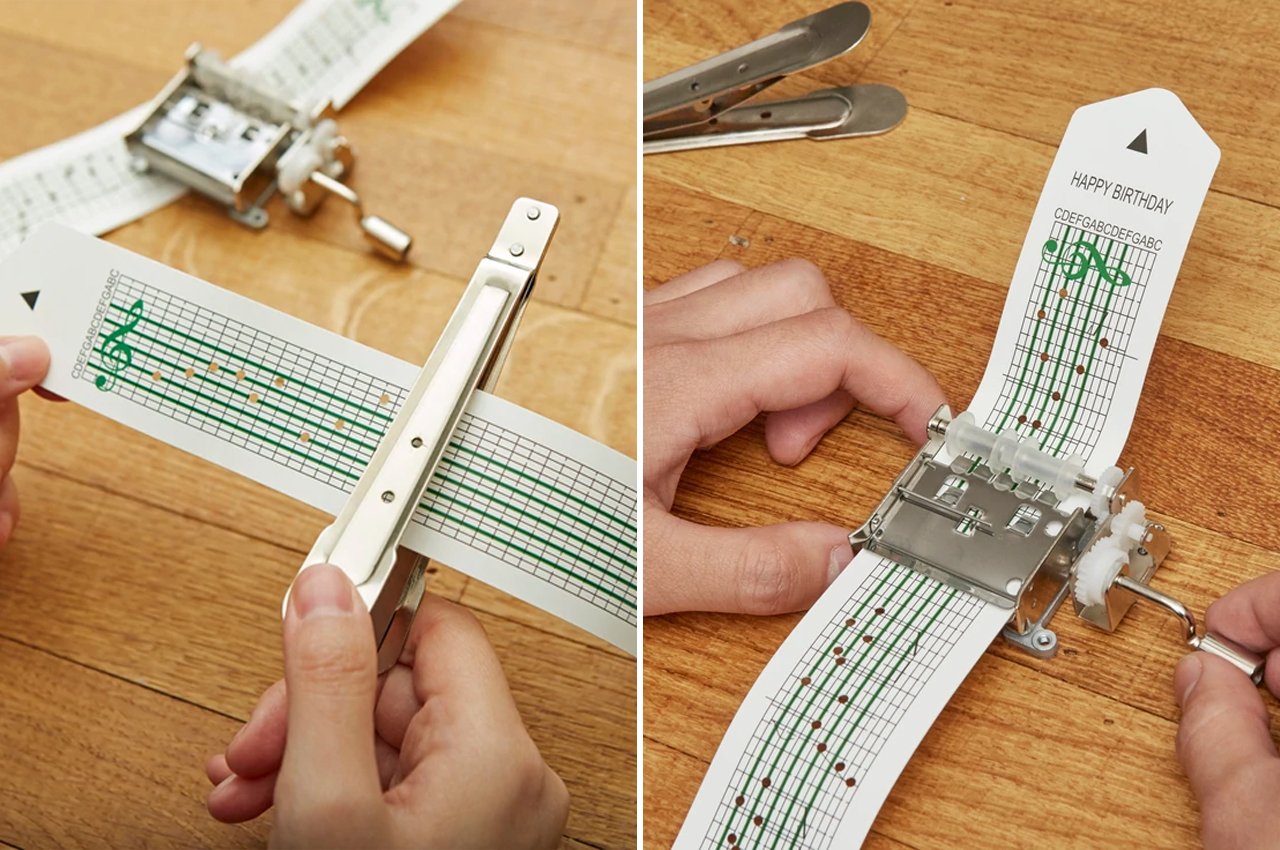Home>Devices & Equipment>Music Box>How To Lubricate Music Box Mechanism
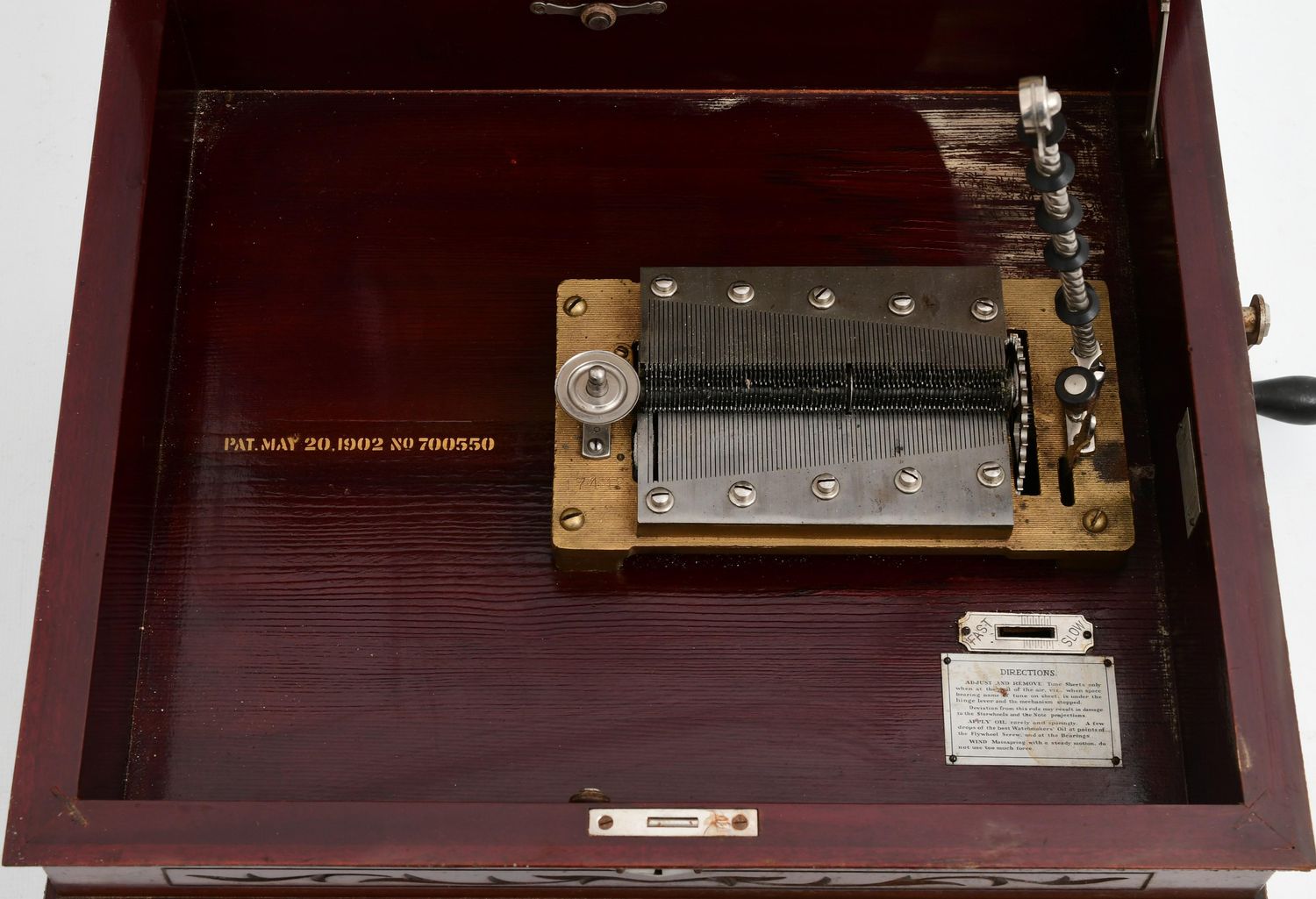

Music Box
How To Lubricate Music Box Mechanism
Published: January 12, 2024
Learn how to properly lubricate the delicate mechanism of your music box to keep it functioning smoothly. Step-by-step guide for music box owners.
(Many of the links in this article redirect to a specific reviewed product. Your purchase of these products through affiliate links helps to generate commission for AudioLover.com, at no extra cost. Learn more)
Table of Contents
Introduction
Welcome to the enchanting world of music boxes! These delightful little treasures have been captivating people’s hearts for centuries, with their enchanting melodies and intricate mechanical movements. Whether you have a cherished family heirloom or a newfound love for these magical instruments, it’s essential to take good care of your music box to ensure it continues to play beautiful tunes for years to come.
One of the crucial aspects of maintaining a music box is keeping its mechanism well-lubricated. Over time, the movement of the gears and other components can cause friction, leading to wear and tear. When left untreated, this friction can result in a loss of sound quality or even damage to the delicate internal parts of the music box.
In this article, we will guide you through the process of lubricating a music box mechanism, step by step. We will discuss the importance of understanding the mechanism, choosing the right lubricant, and properly applying it to ensure optimal performance. So, let’s dive into the fascinating world of music boxes and learn how to keep them singing with joy!
Understanding the Music Box Mechanism
Before we dive into the process of lubricating a music box, it’s important to have a basic understanding of how these fascinating devices work. At their core, music boxes consist of a mechanism composed of gears, pins, and a comb.
The gears are responsible for transferring the motion from the winding mechanism to the comb, which is comprised of individual tuned metal teeth. As the comb is plucked by the pins on the rotating cylinder or disc, it produces the distinct musical notes that we all love to hear.
These mechanical movements can vary in complexity and design, depending on the type of music box. Some may have cylinder movements, which utilize a long cylinder with pins, while others may utilize a disc mechanism with specially placed pins. Regardless of the specific mechanism, the goal of lubrication is to reduce friction between the moving parts and ensure smooth operation.
It’s essential to note that different music boxes may have unique mechanisms, and it’s always helpful to consult the manufacturer’s instructions or seek professional guidance if you’re unsure about your specific music box’s internal workings.
Now that we have a basic understanding of the music box mechanism, let’s move on to the next step—choosing the right lubricant.
Choosing the Right Lubricant
When it comes to lubricating a music box mechanism, using the right lubricant is crucial. The ideal lubricant is one that enhances the smooth operation of the gears and other moving parts without causing any damage or buildup over time.
It’s important to avoid using common household oils or lubricants, as they may be too thick or contain additives that can gum up the delicate components of the music box. Instead, opt for a specialized synthetic oil or grease that is specifically designed for precision instruments and mechanical movements.
One popular choice among experts is a lightweight synthetic clock oil. Clock oil has excellent properties for lubricating small mechanisms and is often used by watchmakers and horologists. Alternatively, you can also consider a synthetic grease with a low viscosity, which provides a more substantial lubricating barrier and is suitable for larger, more intricate music box mechanisms.
When purchasing a lubricant, look for one that specifies its compatibility with music boxes or similar precision mechanical devices. Reading product reviews and consulting with knowledgeable professionals can also help you make an informed decision.
Remember, the goal is to find a lubricant that is reliable, long-lasting, and safe for the delicate components of your music box. By choosing the right lubricant, you’ll ensure that your music box operates smoothly and maintains its exquisite sound.
Now that you know how to select the appropriate lubricant, let’s move on to preparing the music box for lubrication.
Preparing the Music Box
Before you begin the lubrication process, it’s essential to prepare the music box and its mechanism to ensure optimal results. Preparing the music box involves a few simple steps.
First, make sure the music box is completely unwound. This is important to prevent any accidentally movement or damage while you’re working on it. Gently turn the winding key counterclockwise until you feel no resistance.
Next, carefully remove any dust or debris that may have accumulated on the surface of the music box. You can use a soft, lint-free cloth or a small brush to gently wipe away any dirt or particles. Be cautious not to apply excessive pressure or force to the delicate components of the music box.
Additionally, inspect the music box for any visible signs of wear or damage. Pay close attention to the gears, pins, and comb, as these are the primary components that require lubrication. If you notice any broken or bent parts, it’s advisable to seek professional repair or replace the damaged components before proceeding with the lubrication process.
Once you’ve ensured that the music box is clean and in good condition, you’re ready to move on to the next step—applying the lubricant to the gears.
Before we dive into the lubrication process, let’s take a moment to appreciate the intricacy of music box mechanisms and the joy they bring. Now, let’s move on to the next step in the lubrication process—applying lubricant to the gears.
Applying Lubricant to the Gears
Now that you have prepared the music box, it’s time to apply the lubricant to the gears. The gears are the heart of the music box mechanism and require proper lubrication to ensure smooth movement and reduce friction.
Start by locating the gears within the music box. Depending on the design, you may need to remove the cover or back panel to access them. Take caution during this step to avoid putting unnecessary pressure or force on the delicate parts of the music box.
Once you have access to the gears, apply a small amount of the chosen lubricant to a clean, lint-free cloth or a precision applicator, if available. It’s important to use only a minimal amount of lubricant to avoid over-lubrication, which can lead to excess buildup and cause other issues in the long run.
Gently and evenly apply the lubricant to the teeth and gears, making sure to cover all the moving parts that come into contact with each other. Use small, controlled movements to ensure that each gear is adequately lubricated. Avoid applying lubricant to areas that do not have direct contact with the moving parts, as this can attract dust and debris.
After applying the lubricant, manually rotate the gears a few times to distribute the lubricant evenly and ensure smooth movement. This step helps to work the lubricant into the interlocking teeth and gears, maximizing its effectiveness.
Once you are satisfied with the lubrication of the gears, it’s time to move on to lubricating the other moving parts of the music box mechanism.
With the gears properly lubricated, you have taken an important step in maintaining the smooth functioning of your music box. However, there are other components in the mechanism that also require lubrication. Let’s explore how to lubricate these parts in the next section.
Lubricating the Other Moving Parts
In addition to the gears, there are other crucial moving parts in a music box mechanism that also require proper lubrication. These components play a vital role in the overall operation and performance of the music box.
One of these components is the axle or pivot points. These are the points where various moving parts rotate or pivot. Apply a small amount of lubricant directly onto these points to ensure smooth movement and reduce friction. Use a precision applicator or a clean lint-free cloth for precise application.
If your music box has a rotating cylinder or disc with pins, pay particular attention to these pins. Apply a tiny drop of lubricant on each pin to ensure they move smoothly along the comb. This step is essential for maintaining the quality of the musical tones produced by the music box.
Additionally, some music boxes have a governor or fan mechanism that controls the speed of the rotation. The governor typically consists of small flyweights or balls that move outward as the music box winds down, regulating the speed. Apply a small amount of lubricant to these moving parts to ensure their smooth operation.
Remember to be cautious and to apply a minimal amount of lubricant to avoid over-lubrication. Too much lubricant can lead to buildup and interfere with the proper functioning of the music box.
After lubricating these additional moving parts, it’s essential to give the lubricant a chance to settle and distribute evenly. Allow the lubricant to sit for a few minutes to ensure it has had proper time to seep into the mechanisms and reduce friction.
Now that you’ve lubricated the gears and other moving parts of the music box, it’s time for the most exciting part—testing and enjoying the beautifully lubricated music box!
With the gears and other moving parts of your music box properly lubricated, you are now ready to test and enjoy the sweet sounds of your beloved instrument. Let’s explore the final step in the process in the following section.
Testing and Enjoying the Lubricated Music Box
After completing the lubrication process, it’s time to test the fruits of your labor and enjoy the beautiful melody of your music box. Proper lubrication should result in smoother operation, improved sound quality, and prolonged lifespan of the mechanism.
Start by carefully winding the music box using the winding key. Ensure that you do not overwind the mechanism, as this can cause unnecessary strain on the gears and other components. Follow the manufacturer’s recommendations regarding the number of turns or duration of winding to avoid any potential damage.
Once the music box is wound, gently activate the mechanism by either turning a switch or gently rotating the plunger or lever that engages the mechanism. Listen closely to the sound produced by the music box. If the lubrication process was successful, you should notice a clearer and smoother sound, with minimal grinding or squeaking noises.
Observe the movement of the gears and other components as well. They should move with greater ease and fluidity, without any visible signs of friction or hesitation. If you notice any issues such as sticking gears or other unusual movements, it may be an indication that further lubrication or maintenance is required.
Take the time to enjoy your music box’s beautiful melodies, as well as the satisfaction of a job well done. Allow yourself to be transported to a world of nostalgia and enchantment as the music fills the air.
Remember that periodic maintenance and lubrication are essential for the longevity and optimal performance of your music box. Depending on its usage and conditions, it’s advisable to repeat the lubrication process every 1-2 years, or sooner if you notice any deterioration in sound quality or mechanical functioning.
By regularly maintaining and lubricating your music box, you can ensure that it continues to bring joy and wonder for generations to come.
Congratulations! You have successfully learned how to lubricate and care for your music box. The love and attention you give to your cherished ornament will undoubtedly make it a timeless treasure in your collection.
Now, sit back, relax, and let the magical melodies of your music box enchant your soul.
Conclusion
Caring for your music box is essential to preserve its beauty and ensure its longevity, and proper lubrication plays a crucial role in keeping the mechanism running smoothly. By understanding the music box mechanism, choosing the right lubricant, and following the steps to apply it correctly, you can maintain the enchanting melodies of your beloved music box for years to come.
Remember to select a specialized synthetic oil or grease designed for precision instruments, as common household lubricants may cause damage or buildup. Take the time to prepare your music box by cleaning it and checking for any wear or damage. Applying the lubricant carefully to the gears and other moving parts, such as the axle and pins, is vital to reduce friction and ensure optimal performance.
After lubricating the music box, give the lubricant time to settle and distribute evenly before testing the mechanism. Listen for the smoother sound and observe the ease of movement in the gears and other components. Regular maintenance, including periodic lubrication every 1-2 years, will help keep your music box in optimal condition.
So, whether you have an heirloom from generations past or a newly acquired music box, remember to give it the love and attention it deserves. The enchanting melodies it produces will continue to bring joy and nostalgia to your life.
Lastly, take a moment to appreciate the intricate craftsmanship and artistry of the music box—how it combines mechanical precision with a touch of magic. Immerse yourself in the captivating melodies, and let the music transport you to a world of wonder and delight.
By following these guidelines and showing your music box the care it deserves, you can ensure that it remains a cherished treasure for years to come. Enjoy the sweet melodies and the memories they evoke, and let your music box be a cherished companion on your journey through life.


